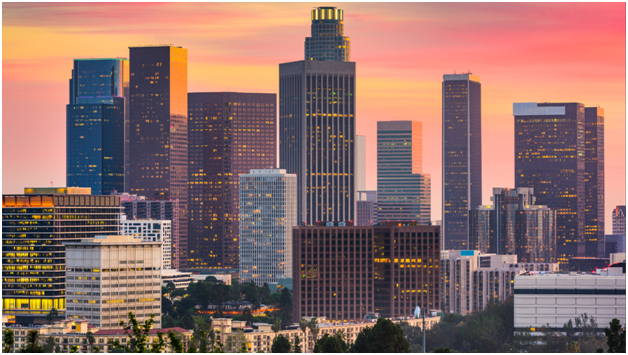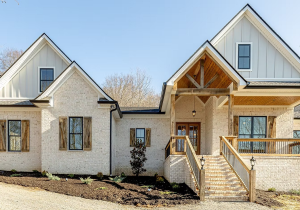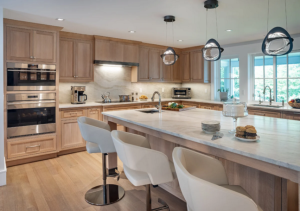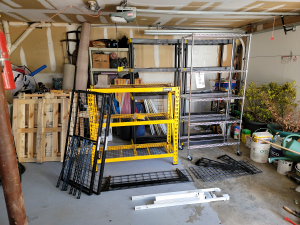
Behind every lasting work of architecture is a clear vision—and in Los Angeles, few architectural duos have demonstrated a more consistent, refined, and human-centered approach than the team of Zoltan E. Pali and Judit M. Fekete-Pali. Their body of work blends modernism with emotion, precision with poetry, and structure with story.
Rather than chasing trends, their design philosophy is rooted in timeless principles: respect for context, reverence for light, and a deep connection to form and material. Together, they’ve contributed some of the most quietly powerful architecture in Southern California—projects that speak volumes through balance, clarity, and restraint.
Here are five standout projects that best reflect the founders’ architectural vision.
1. The Wallis Annenberg Center for the Performing Arts – Beverly Hills
Few projects better represent the founders’ ability to honor history while looking forward than The Wallis. Located in the heart of Beverly Hills, this cultural landmark merges a 1933 Italianate post office with a striking contemporary theater addition. The result is not a clash of eras, but a conversation.
The original post office is meticulously restored and repurposed into a studio theater, education center, and gathering space. Meanwhile, the 500-seat Goldsmith Theater, designed as a copper-clad volume, emerges behind it—sleek yet warm, bold yet contextual.
This project exemplifies the founders’ belief in the continuity of time, where architecture doesn’t overwrite history but builds upon it. Their signature restraint and focus on detail allow both old and new to breathe.
2. The Greek Theatre Renovation – Griffith Park
The Greek Theatre is a Los Angeles icon, beloved for its natural setting and open-air concerts. When it came time to upgrade and preserve the venue, the design team faced the challenge of modernizing infrastructure without compromising character.
The renovation focused on enhancing backstage functionality, acoustics, audience comfort, and accessibility, all while maintaining the theater’s historical integrity. New service buildings were discreetly inserted into the wooded landscape, designed to blend seamlessly with the existing amphitheater.
This project reveals a core aspect of the founders’ vision: the architecture should never overshadow the experience. Instead, it should support it, frame it, and quietly elevate it—especially when the setting is as sacred to the community as Griffith Park.
3. The MODAA Building – Culver City
In stark contrast to large public projects, the MODAA Building in Culver City is a perfect example of how the founders bring their vision to smaller-scale, urban commercial architecture. This three-story mixed-use building is a minimalist statement made with careful proportions, elegant materials, and a restrained urban presence.
The building’s refined concrete façade, warm wood detailing, and large expanses of glass create a modern, functional space that’s deeply responsive to its environment. It demonstrates how thoughtful design doesn’t require flash—it simply requires clarity of purpose.
This project exemplifies the kind of work that sets experienced architects apart: the ability to distill complexity into simplicity without sacrificing nuance or sophistication.
4. James Bridges Theater – UCLA School of Theater, Film and Television
Originally a 1930s lecture hall, the James Bridges Theater was transformed into a state-of-the-art venue for UCLA’s film and theater students. Rather than demolish and rebuild, the project involved a surgical renovation: preserving the character of the existing shell while inserting a technically advanced screening room.
The new interior features acoustic paneling, projection technology, and precise lighting—quietly executed to serve the art of storytelling. The founders approached this project with their hallmark discipline, creating a cinematic space that respects both the academic environment and the emotional impact of film.
Here, as in their other work, the goal isn’t spectacle—it’s resonance. The theater becomes a vessel for creativity, not a distraction from it.
5. LADOT Maintenance Yard + Office Building – Downtown LA
While municipal buildings rarely receive architectural attention, this project turns that assumption on its head. Located in the industrial edges of downtown LA, the LADOT Maintenance Yard and Office Building combines administrative, maintenance, and vehicle storage facilities into a cohesive, sustainable campus.
The design emphasizes transparency, daylighting, and honest materials—an embodiment of civic pride through architecture. The sleek forms, clean lines, and rhythmic façades elevate an otherwise utilitarian program, showing that good design belongs everywhere—not just in museums and concert halls.
This project underscores the founders’ democratic approach to architecture: every project, no matter how modest in scope, deserves intelligence, intention, and integrity.
Across theaters, office buildings, and civic spaces, the work of Zoltan E. Pali and Judit M. Fekete-Pali is remarkably consistent in its restraint, beauty, and purpose. Their architecture never shouts, but it always speaks—calmly, confidently, and with deep respect for place and people.
These five projects only begin to scratch the surface of a larger body of work that has quietly reshaped the Los Angeles architectural landscape. And whether it’s a performance hall or a public service building, each reflects the values of experienced LA architects who design not just for the present—but for the long arc of time.





